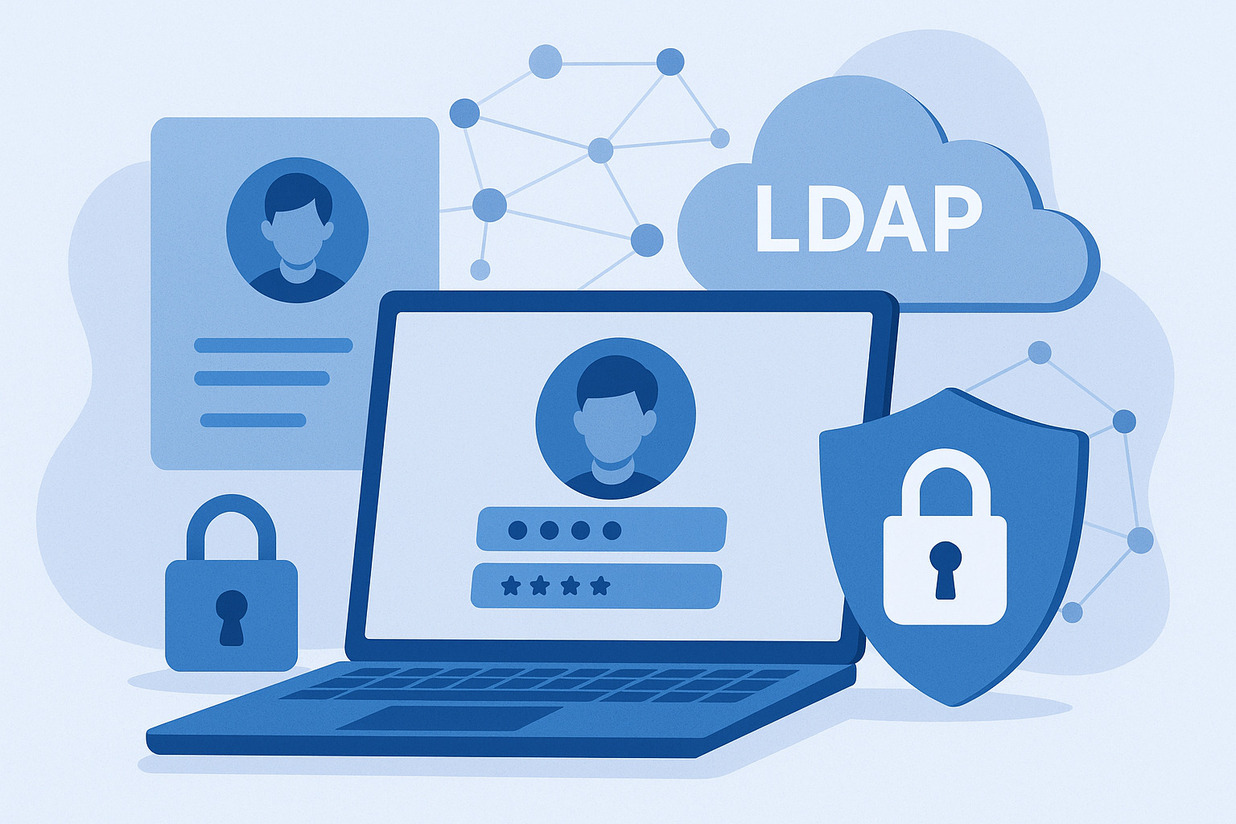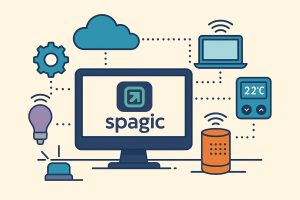
LDAP as Spagic’s Authentication Partner
Integrating Spagic with LDAP provides a robust and centralized method for user authentication. For companies and system administrators, using LDAP offers a controlled and scalable solution for managing access. With growing demands for security, such solutions are increasingly preferred for being standardized and easy to integrate.
LDAP, or Lightweight Directory Access Protocol, is a protocol for accessing distributed directory services. It’s widely used across organizations for identity and access management. When integrated into Spagic, it simplifies the management of roles, user credentials, and access policies in an enterprise environment.
This isn’t just a technical upgrade—it’s a practical move for organizations looking to run a secure, efficient, and well-controlled middleware system, covering everything from login to service usage within the Spagic ecosystem.
Integrating LDAP into Spagic Workflows
LDAP integration in Spagic creates a seamless authentication flow from login to service access. Instead of maintaining a separate user database, Spagic pulls user data directly from an LDAP directory. This means any user with an LDAP account and proper permissions can access Spagic automatically.
This approach helps eliminate duplicate user accounts across systems. In real-world scenarios, this setup is common in companies using Active Directory, where the organizational structure is centralized. Once configured in Spagic, updates to roles or access only need to be made in one place.
LDAP not only handles credentials but also manages organizational units and access levels. With proper mapping, this structure can be reflected within Spagic for a smooth authentication-to-authorization experience.
Core Principles of LDAP Authentication
The foundation of LDAP authentication lies in having a centralized repository of user identities. Spagic does not validate users itself; instead, it queries the LDAP directory to confirm credentials. LDAP responds—yes if valid, no if not.
For example, when a user logs in using a corporate email and password, Spagic sends this request to the LDAP server. The server verifies the data and, if correct, returns an authentication token. Spagic then uses this to grant or deny access.
The advantage of this setup lies in its centralized control. Password resets, account blocks, and session timeouts become much easier to manage—all within the LDAP system.
Configuring an LDAP Server for Spagic
Before using LDAP with Spagic, you must first configure the LDAP server. This includes setting the correct base DN (Distinguished Name), bind credentials, and query structure for user lookup. Any incorrect detail can break the authentication flow.
Commonly used solutions include open-source tools like OpenLDAP or enterprise-grade systems like Active Directory. The configuration depends on how your directory tree is organized. For instance, if users are under “ou=employees,” this must be reflected in Spagic’s configuration file.
Once correctly set up, the authentication bridge is established. While usually a one-time configuration, continuous monitoring of LDAP server availability is necessary to avoid login issues in Spagic.
How Spagic Authenticates Users Using LDAP
When a user initiates a login, Spagic captures their credentials and sends them as an authentication request to the LDAP server. Through a bind operation, LDAP attempts to authenticate using the provided details.
If successful, LDAP returns a confirmation. Spagic can also use additional attributes such as group membership to assign internal roles and permissions.
For instance, if a user is part of an “admin” group in LDAP, they can be granted access to Spagic’s admin panel. This mapping can be customized based on each organization’s policies.
Steps to Integrate LDAP into Spagic
LDAP integration in Spagic typically follows a few steps:
- Configure the authentication module with LDAP details, such as the server URL, bind DN, and password.
- Specify the correct base DN to locate user entries.
- Set attribute mapping—for example, mapping “uid” in LDAP to “username” in Spagic.
After configuration, perform an authentication test with sample credentials. Once successful, it’s ready for production rollout.
While not overly difficult, the process requires precision. Even a minor typo in the DN or an incorrect attribute can prevent users from logging in.
Troubleshooting Common Authentication Issues
Sometimes users can’t log in to Spagic despite using correct credentials. This usually points to an LDAP configuration problem. It could be that the LDAP server is unreachable or the base DN was changed and not updated in Spagic.
Other times, users are placed in the wrong group or lack the necessary LDAP permissions. Although authenticated, they may not receive appropriate access rights. Active monitoring of authentication logs helps identify such issues quickly.
An audit trail of login attempts is good practice. This helps pinpoint errors—whether during binding, user lookup, or credential validation—making issue resolution more efficient.
Security Considerations in LDAP and Spagic Integration
LDAP integration requires strict attention to security. Since authentication is centralized, communications should be encrypted using LDAPS. Otherwise, credentials can be intercepted during transmission.
Secure binding is also important. Instead of anonymous access, an admin-level bind account with read-only access is preferred. This limits visibility and modification of sensitive LDAP entries.
Multi-factor authentication (MFA) can also be enforced at the LDAP level. Spagic can be configured to honor these sessions, providing even greater protection.
Maintaining Scalability with a Growing User Base
As enterprises grow, so does the number of users requiring authentication. LDAP handles this well due to its distributed and clone-ready architecture.
Spagic can cache validated sessions to reduce repeated LDAP queries, maintaining high performance and security in high-volume environments.
In horizontally scalable setups, LDAP servers can be load-balanced, and Spagic configured to pick from available nodes—ideal for production-grade deployments.
Monitoring Login Activity and Access Logs
Audit trails aren’t just useful for troubleshooting—they’re essential for compliance. Spagic can enable detailed logging for both successful and failed authentication attempts.
Logs can include IP addresses, usernames, timestamps, and session durations. This helps detect suspicious behavior like brute-force attacks or unusual login patterns.
Combined with LDAP logs, administrators gain a full view of who accessed the system, when, and how often—critical for organizations following ISO or SOC 2 standards.
Simplified Access Management for Administrators
LDAP integration simplifies user lifecycle management for Spagic administrators. There’s no need to manually create Spagic accounts. Instead, LDAP accounts are automatically recognized.
Access control, role changes, and account removal are all centralized. A single change in LDAP affects all integrated systems—faster, more controlled, and more secure.
Additionally, group-based access automates role assignment. In large organizations, this supports seamless automation and policy enforcement.
